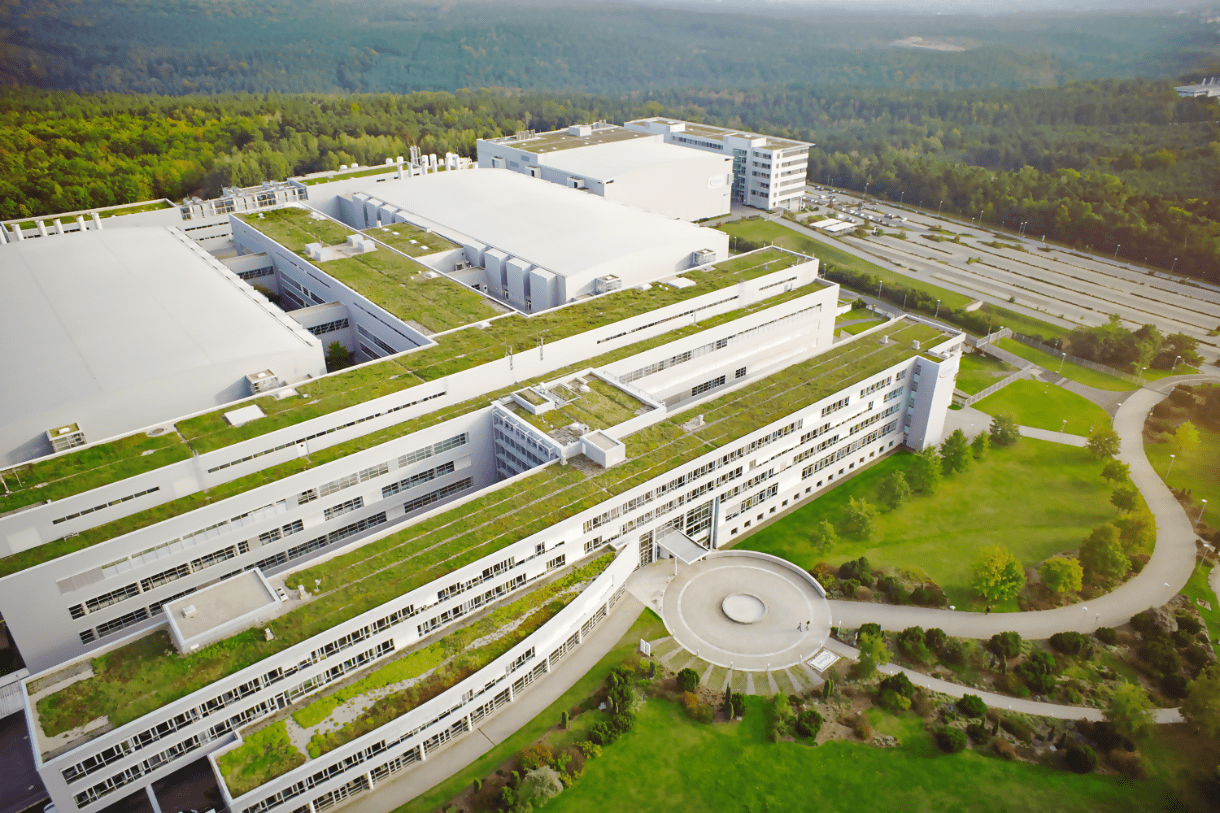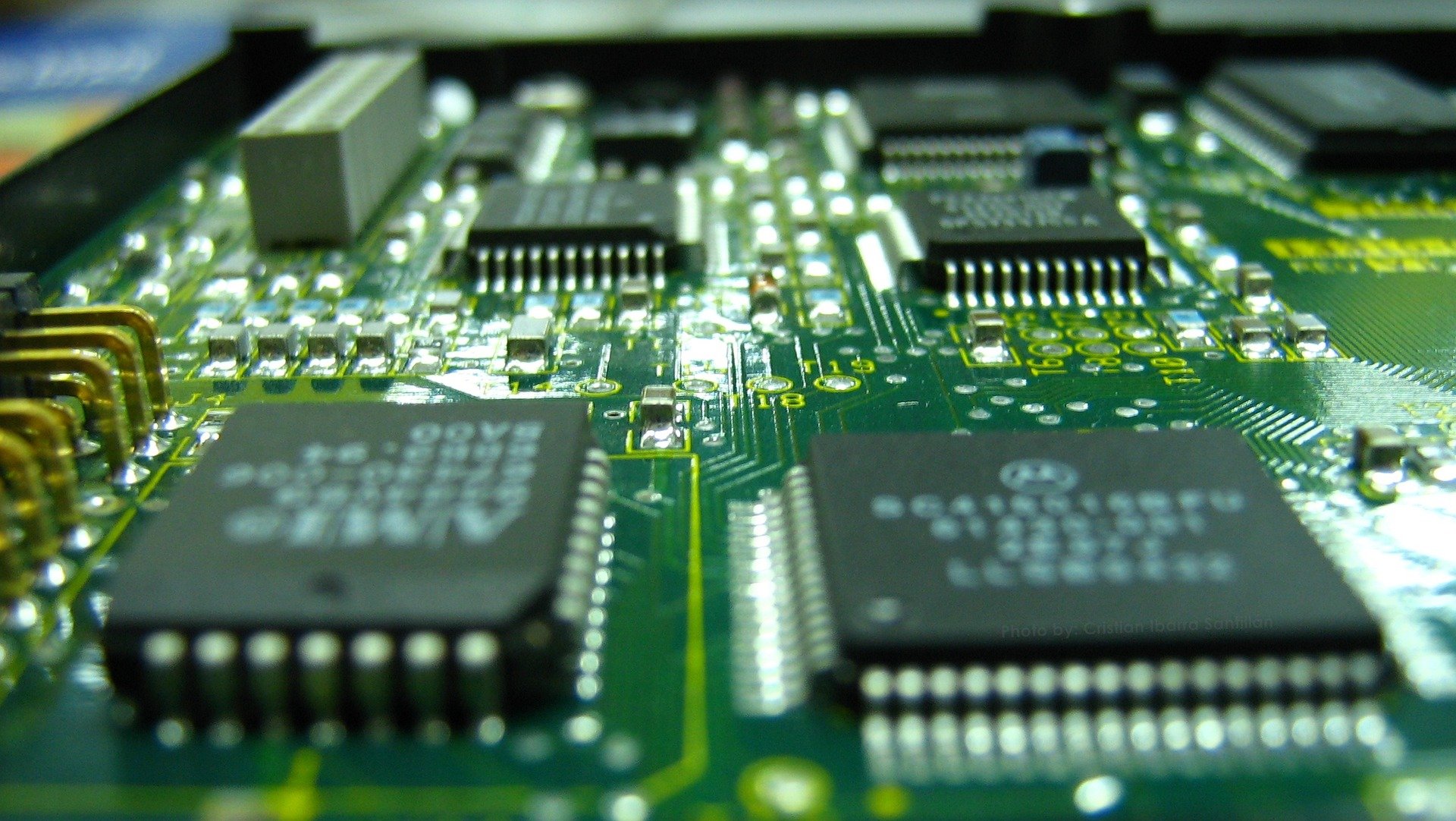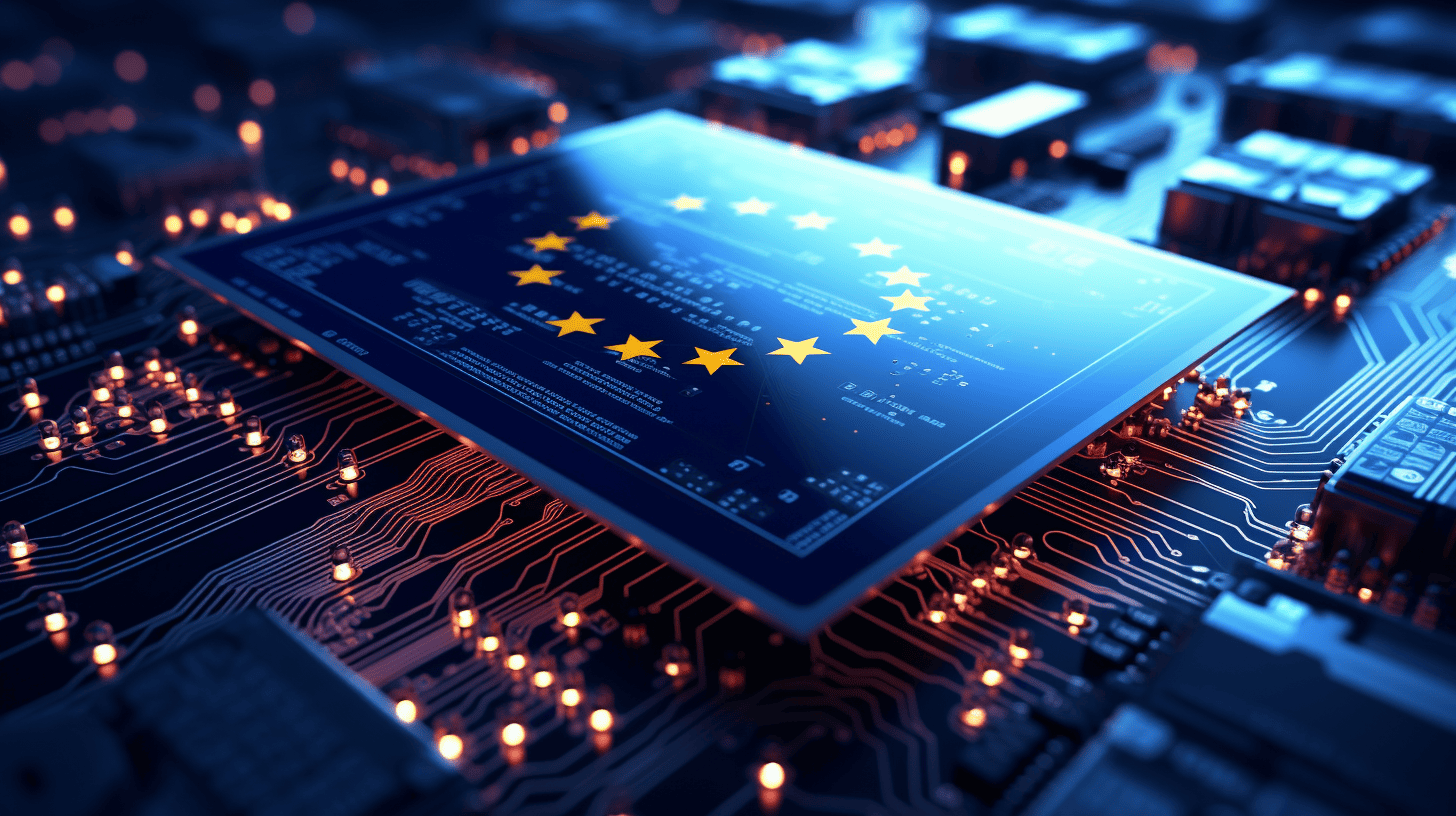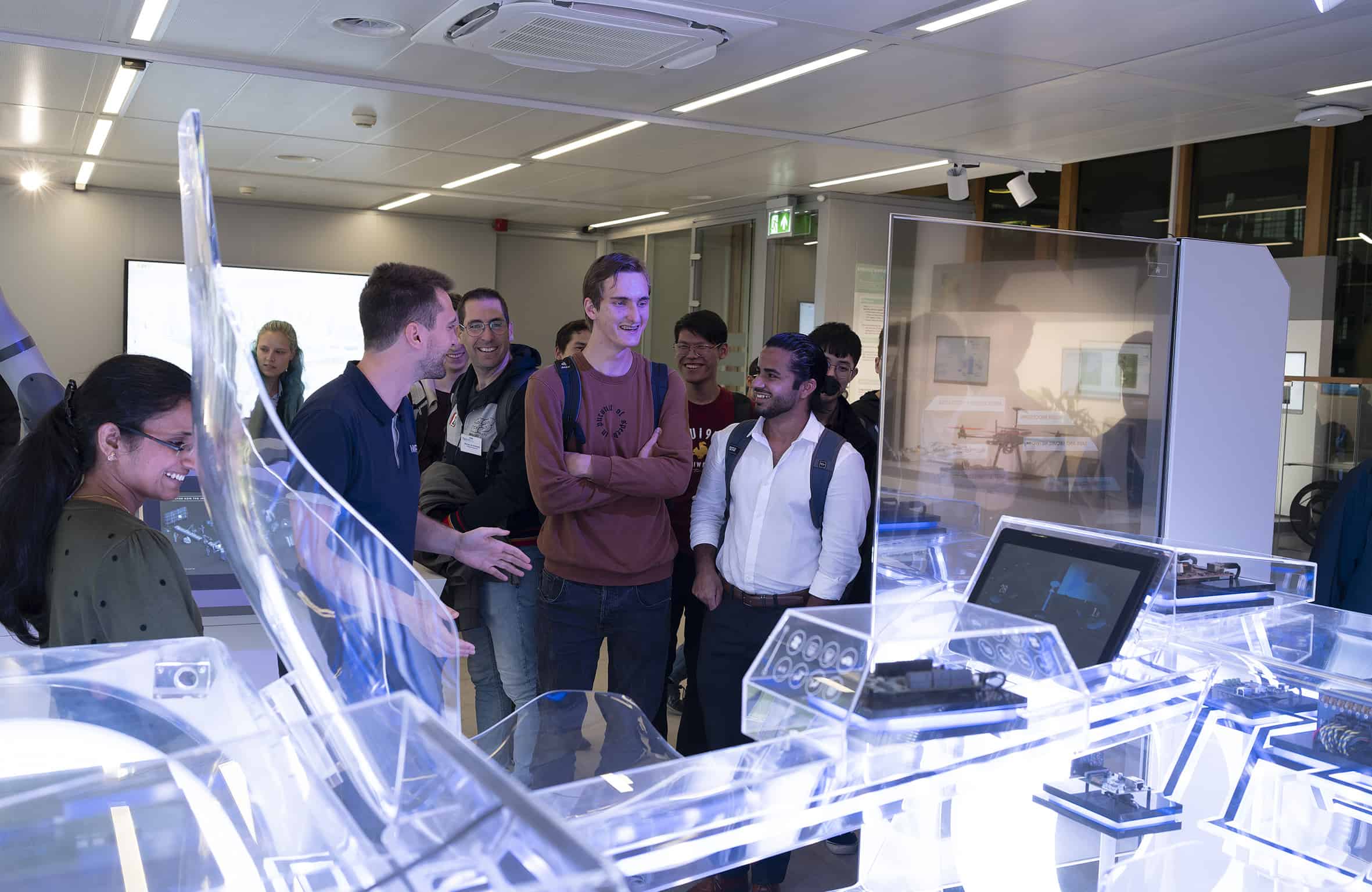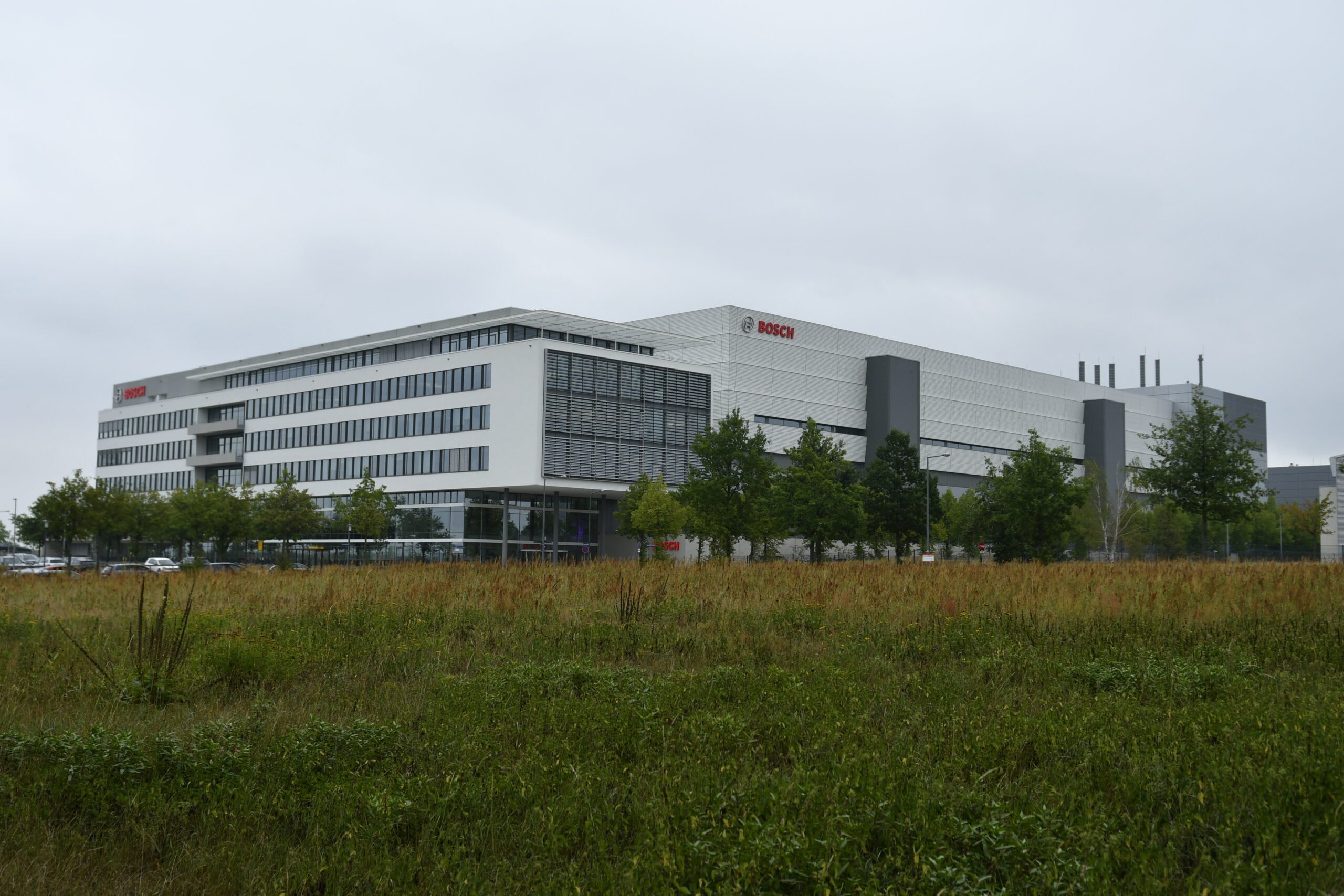
In Germany this summer, you can travel on regional public transport for 9 euros per month. Innovation Origins is seizing this opportunity to visit a number of future-proof projects. In this edition, we travel to Dresden.
After a train ride that takes almost four hours, we begin our bike ride from Dresden Klotsche station, a beautiful villa neighborhood in the north of the capital of Saxony. From there, we cycle towards the airport and a large business park.
The first company we pass along the way is Sempa Systems, a company that makes measuring instruments and chemicals for the chip industry. A cluster of companies is located just a few hundred meters away: the Japanese semiconductor group Renesas Electronics, Solarwatt, X-Fab Dresden, Jenoptik Optical Systems, the American Photronics and two Fraunhofer research institutes: one for photonics (IPMS) and the other for ceramic technologies (IKTS).
Little by little it becomes clearer what Dresden is good at: it is brimming with companies that are active in the field of microtechnology. Some make semiconductors and sensors. Some are involved in R&D, while others are suppliers of machines, materials, packaging or test equipment, to name but a few.
Over the phone, Robert Weichert – the spokesperson for Silicon Saxony – explains that this is due to a long tradition in Dresden that partly dates back to the beginning of the last century when many electronics products were made in Saxony, such as radios and still cameras.
Although the GDR era is even more important to the region’s history.

GDR
Weichert: “In the planned economy of the GDR it was customary for different regions to specialize.” So you had the chemical industry near Halle, Magdeburg was good at heavy machinery, steel came from Eisenhüttenstadt, automobile factories were based in Zwickau and Eisenach, you had the optical industry around Jena, and electronics were manufactured in Dresden, Chemnitz and Freiberg.
As a result, Dresden became the center of East German microtechnology. But when the Wall toppled, that unfortunately did not have a positive impact.The East German companies were no match for foreign competition. Almost all the companies folded, although the knowledge was certainly not lost.
A good example is X-Fab, which is mentioned above. After numerous mergers, splits and takeovers, this is one of the offshoots of the GDR conglomerate VEB Mikroelektronik that had branches across several cities. In 1988 in Dresden, one of its subsidiaries developed, amongst others things, a chip with a memory capacity of 1 MB, which was quite a lot for that time.
Renesas Electronics is yet another example. The Japanese also acquired several parts of VEB Mikroelektronik through various channels.
Revitalization
“The 1990s were especially grim,” Weichert recounts. “The turning point came at the beginning of this century when more attention was given to revitalizing East German industry. “Not for nothing, 2000 was the year that the Silicon Saxony lobby group was born.”
“In the beginning, Silicon Saxony was primarily focused on the neighboring cities of Dresden (microelectronics), Freiberg (wafers) and Chemnitz (sensors). Our task was to bring companies and research institutions closer together. To establish a network. Later, other cities followed. For example, Leipzig is now an important logistics hub and Bitterfeld-Wolfen is a center for raw materials and semi-finished products needed for manufacturing chips.”
To keep things simple, Weichert also counts Magdeburg as part of the semiconductor cluster, even though it is slightly further away. And it is common knowledge in Saxony, they would have preferred Intel to have made its huge 17 billion euro investment in Leipzig. Besides, Magdeburg is in another state (Saxony-Anhalt), which is always a bit of an issue in federal Germany as well.

When all is said and done, Weichert believes that, more than 20 years later, Dresden can rightfully claim to be one of the most important European hubs for the semiconductor industry. Other centers in the EU include Grenoble, Eindhoven, Leuven, Aachen and Villach.
Robert Bosch
As we cycle further, it turns out there is a good reason for that. Once we pass the airport, the gigantic new factory of Robert Bosch GmbH soon looms up ahead.
The aforementioned companies pale into insignificance in the face of this mega-complex. With a sort of moat outside the entrance, the Stuttgart electronics group from southern Germany is working on expanding its semiconductor division here. The one-year-old factory in Dresden cost more than a billion euros and is considered to be one of the most modern in Europe.
There will undoubtedly be more to come on this front in the coming years as well, as Bosch CEO Stefan Hartung stated on a visit to Dresden a few weeks ago, “We aim to invest three billion euros in this division by 2026.”
Bosch continues to manufacture and develop chips in Reutlingen (Baden-Württemberg) and shortly in Malaysia (Penang).
Demand exceeds supply
The investments made by Bosch were in part born out of necessity. Bosch is one of the world’s largest suppliers to the automotive industry, and that calls for a lot of chips these days. The same holds true for the other electrical products that Bosch makes, such as drills, refrigerators and e-bikes.
However, these chips are scarce on the global market. Which is why Bosch wants to become more self-sufficient in the future. On top of that, self-developed semiconductors are hugely important when it comes to profitability. “For us, the smallest components have tremendous importance where business economics are concerned,” Hartung said.
Nearby the Bosch factory, we also see the building of the Advanced Mask Technology Center (AMTC). This is a joint venture for the development of so-called photomasks, which are instrumental in applying the microscopic circuits to chips and wafers.
GlobalFoundries
One of the partners of AMTC is the American GlobalFoundries (GF), which looms up next along the Wilschdorfer Landstrasse past the Bosch factory. GF is a former subsidiary of the American company Advanced Micro Devices (AMD) and has one of its largest factories in Dresden.
The name of the company says it all, GF is what is known as a foundry. These are companies that do not design chips themselves, but instead just fabricate them on commission for other parties.

Infineon
Lastly, on the way back to Dresden-Zentrum, we pass by an R&D center and a couple of factories run by Infineon, the largest chip manufacturer in Germany and Europe with 50,000 employees worldwide. The company recently announced that it, too, wants to expand in Dresden. The group is just waiting until there is more clarity about the so-called European Chips Act, which will involve a great deal of financial support from the government.
According to Weichert, government support is of the utmost importance to the chip sector which often entails huge investments. Bosch also received a 200 million euro grant from the government for its chip factory in Dresden, as it is considered what is known as an Important Project of Common European Interest (IPCEI).

Personnel shortages
We ride on and pass a branch of the Technologiezentrum Dresden. What is noticeable along the whole route is that almost all companies – but especially the smaller ones – have put up large signs or banners with appeals for technical staff. “It’s one of the problems we have all over Germany – a lack of skilled workers and engineers,” Weichert points out.
But it is not the only weakness. In spite of the large pool of companies in Dresden, the city and the region also have their shortcomings, of course. One of which is also a European problem, namely a shortage of companies that are adept at developing new designs for chips. Weichert: “We don’t have Tesla or Apple in Europe, unfortunately, who are really good at that.”

EU
For the rest, he says, Dresden is on the right track. One of the major trophies that can potentially be won in the coming year is Taiwan’s TSMC which, just like Intel, is looking for a production location in Europe. According to insiders, the same goes for that other Asian giant Samsung.
TSMC, like GF, is a foundry, just a bit bigger. According to the figures from the American Semiconductor Industry Association, Taiwan (and TSMC in particular) currently produces more than 90% of all high-end chips in the world.
The European Commission sees this dependency as a risk. Brussels also recognizes that it has made mistakes in the past that have widened the gap between the lagging European chip industry and its competitors.
For example, in 2000, a quarter of all semiconductors were still being made in Europe. That has now dropped to below 10 per cent. As such, Europe has become much more dependent. The European Commission wants to make up for that over the next few years by supporting public investment amounting to about 43 billion euros through to 2030.

Homeward bound
After the industrial estate of Infineon and a branch of the Technologiezentrum Dresden, it’s a fast downhill ride to the city center, until you reach the Albertplatz in Neustadt, where it is suddenly jam-packed with tourists.
After all, let’s not forget that Dresden is also one of Germany’s biggest attractions with a beautifully renovated city center and surroundings which are a sight to behold. Vineyards line the River Elbe, the porcelain town of Meissen and the Saxon Switzerland National Park. It is definitely not a punishment to live, work or study here.



